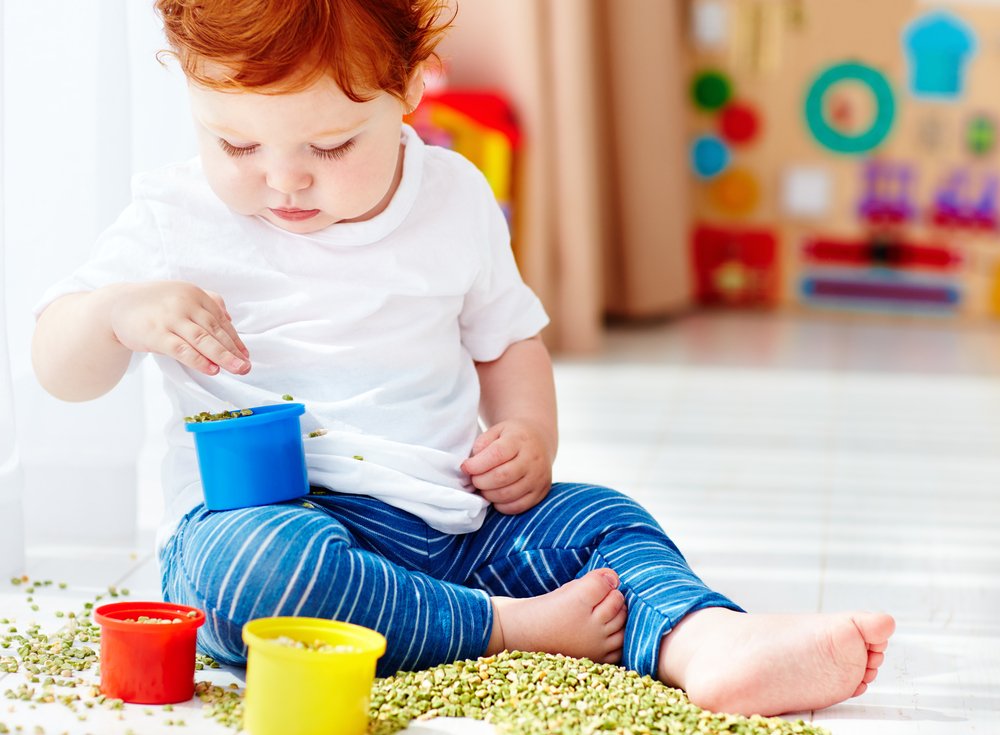One of the great milestones that your baby will fulfill during their first year of life is the pincer grasp. Read more about this important skill.
Key Points:
- The pincer grasp, a critical milestone in a baby’s psychomotor development, involves using the index finger and thumb to pick up small objects. It appears around the eighth or ninth month, opening up new possibilities for exploration and learning.
- Parents can stimulate the pincer grasp by providing opportunities for self-feeding, messy play, using books, playing with blocks and playdough, and engaging in various hands-on activities that enhance fine motor skills and finger dexterity.
Since birth, your baby has been developing and fulfilling an incredible amount of skills that allow them to interact with their surroundings. As a parent, it is amazing to see how our babies meet these challenges with eagerness and joy!
One of the great milestones that your baby will fulfill during their first year of life is the pincer grasp. This milestone is fundamental for their psychomotor development and involves grabbing small objects with the index and thumb.
This is a milestone that will let your little one begin to explore, discover, and even understand more about the world around them. Achieving this skill is not easy, since it requires a lot of practice, and your little one will be developing different skills in their first months that will lead them to achieve the pincer grasp.
How does the pincer grasp develop?
In their third or fourth month, babies start developing their hand-eye coordination and their muscles, so they will try to grab the objects that they want. Also, if you put something in their palm, they will be able to hold it for a few moments and even bring it into their mouth.
Then, when they are around six months old, they will be able to pick up small objects with their whole hand, covering them with their palm and squeezing. Finally, this finger dexterity milestone ーthe pincer graspー will begin to develop around the eighth or ninth month of your baby’s life.
At first, you’ll see them use this type of grasp clumsily, picking up objects in an unstable way or dropping them frequently. Don’t worry, little by little the movement will become more precise. Usually, along with the pincer grasp, babies begin pointing, which means they will point at something with their finger and ask non-verbal questions or request something.
Developing this milestone is a huge breakthrough in the psychomotor abilities of your baby. Going from taking objects with the whole hand to being able to do it with two fingers, opens your little one to endless possibilities that allow them to learn, grow, become more independent, and continue to explore.
If it wasn’t for the development of fine motor skills, one could not play the piano or guitar, write, or type a text message. It’s amazing what our body can do and watching our babies develop their finger dexterity is wonderful!
How can I stimulate the pincer grasp in my baby?
- Let them self-feed on soft pieces of food such as bits of banana, steamed potato, or small baby cereal puffs. This way your baby will work on their motor skills without the risk of taking inedible objects to their mouth. Just remember that, when your baby eats, it is crucial to supervise them to avoid any choking.
- Let your child be messy. This helps to stimulate finger dexterity as they will be moving their hands freely.
- Place books in front of them. Your little one will not be able to turn the pages one by one, but even if they turn five pages at a time this will help them develop their fine motor skills.
- Let your little one tear or crumple pieces of soft paper, just be sure to supervise that they do not put the pieces in their mouth.
- Play with blocks. Place them in front of your little one and try to build a small tower together.
- Place a box with small objects and help your baby put them in and take them out.
- Play with your child and use playdough to make shapes. By picking up a lump of this material, they will be practicing their pincer grasp.
- Paste a piece of paper on the wall and leave a bucket with pompoms next to your baby. Help them collect the pompoms and paste them on the paper.
- Use balls of different sizes and textures. Let your child play with them, feeling and squeezing the little ones that are supple enough.
- Let your baby peel stickers and paste them on a paper sheet or somewhere else. Your little one will probably need your help, so try to assist them if they need it by starting to peel or pinching part of the sticker so they can finish peeling them.
We mentioned some examples of activities you can do with your baby, but there are a lot of things you can do to develop the pincer grasp and finger dexterity. Be sure to check out our activity catalog and remember that over the following months you will be surprised to see your little one develop their fine motor skills.








